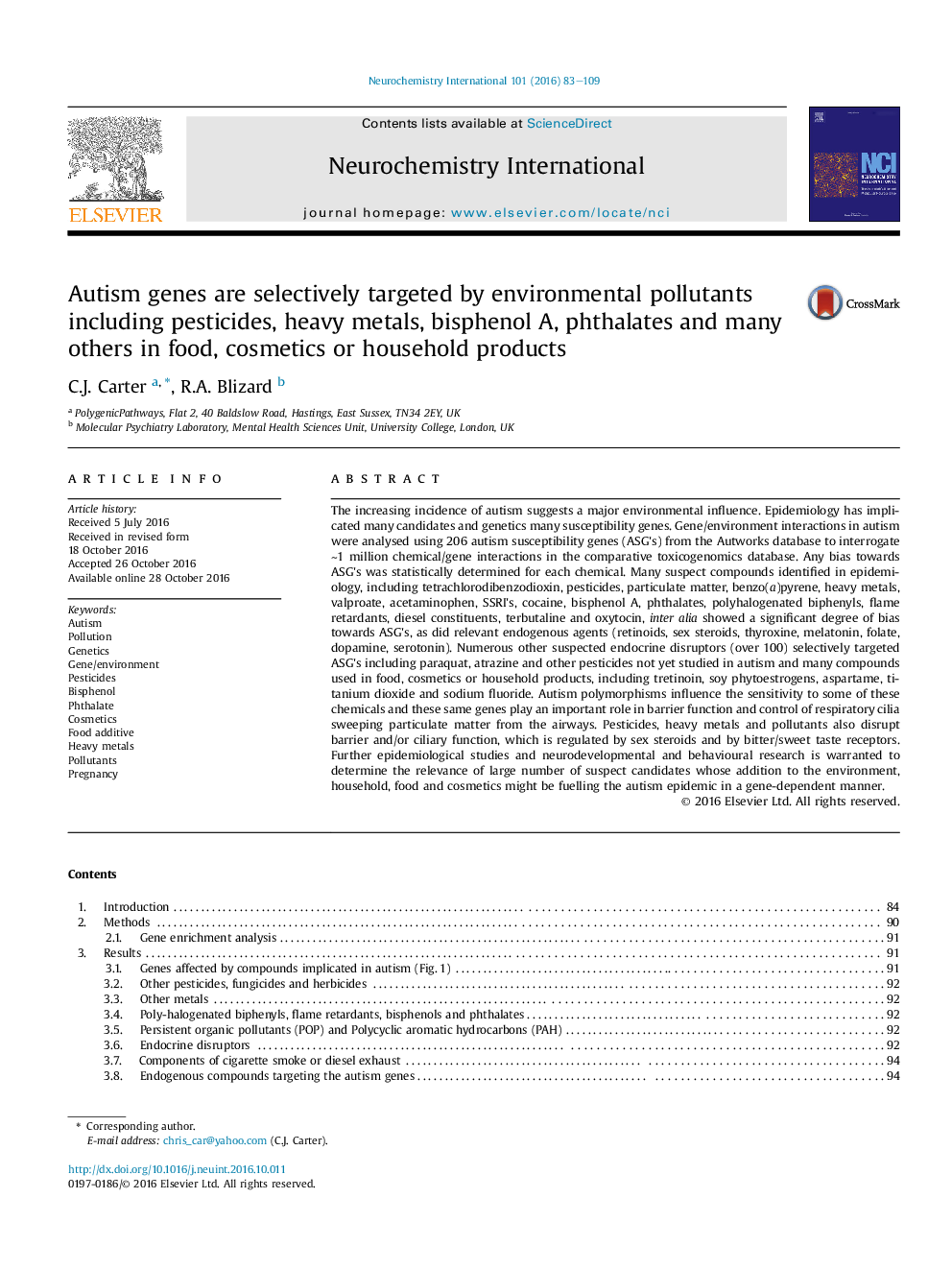| کد مقاله | کد نشریه | سال انتشار | مقاله انگلیسی | نسخه تمام متن |
|---|---|---|---|---|
| 5534765 | 1551274 | 2016 | 27 صفحه PDF | دانلود رایگان |

- Autism gene/chemical interactions were analysed using the Comparative toxicogenomics database.
- Pesticides, heavy metals, bisphenol A, phthalates, polyhalogenated biphenyls, valproate, SSRI's & others selectively target autism genes.
- ⦠as do multiple endocrine disruptors & several food additives, including aspartame, NaF and soy phytoestrogens.
- â¦as well as cosmetic and household product ingredients including tretinoin, titanium dioxide & nonylphenol.
- The autism epidemic may be driven by multiple environmental pollutants via their effects on susceptibility gene products.
The increasing incidence of autism suggests a major environmental influence. Epidemiology has implicated many candidates and genetics many susceptibility genes. Gene/environment interactions in autism were analysed using 206 autism susceptibility genes (ASG's) from the Autworks database to interrogate â¼1 million chemical/gene interactions in the comparative toxicogenomics database. Any bias towards ASG's was statistically determined for each chemical. Many suspect compounds identified in epidemiology, including tetrachlorodibenzodioxin, pesticides, particulate matter, benzo(a)pyrene, heavy metals, valproate, acetaminophen, SSRI's, cocaine, bisphenol A, phthalates, polyhalogenated biphenyls, flame retardants, diesel constituents, terbutaline and oxytocin, inter alia showed a significant degree of bias towards ASG's, as did relevant endogenous agents (retinoids, sex steroids, thyroxine, melatonin, folate, dopamine, serotonin). Numerous other suspected endocrine disruptors (over 100) selectively targeted ASG's including paraquat, atrazine and other pesticides not yet studied in autism and many compounds used in food, cosmetics or household products, including tretinoin, soy phytoestrogens, aspartame, titanium dioxide and sodium fluoride. Autism polymorphisms influence the sensitivity to some of these chemicals and these same genes play an important role in barrier function and control of respiratory cilia sweeping particulate matter from the airways. Pesticides, heavy metals and pollutants also disrupt barrier and/or ciliary function, which is regulated by sex steroids and by bitter/sweet taste receptors. Further epidemiological studies and neurodevelopmental and behavioural research is warranted to determine the relevance of large number of suspect candidates whose addition to the environment, household, food and cosmetics might be fuelling the autism epidemic in a gene-dependent manner.
Journal: Neurochemistry International - Volume 101, December 2016, Pages 83-109